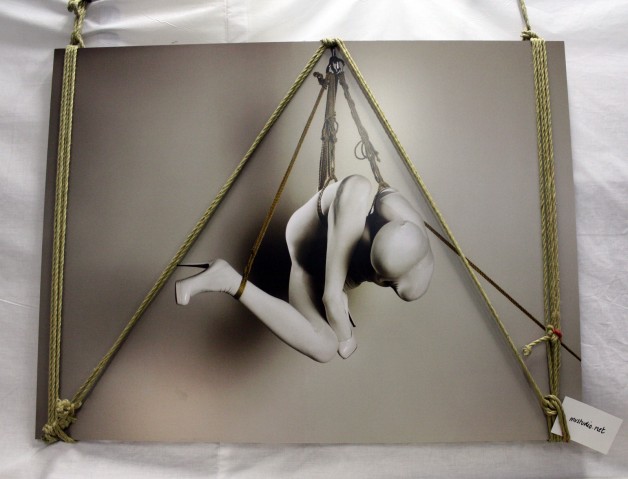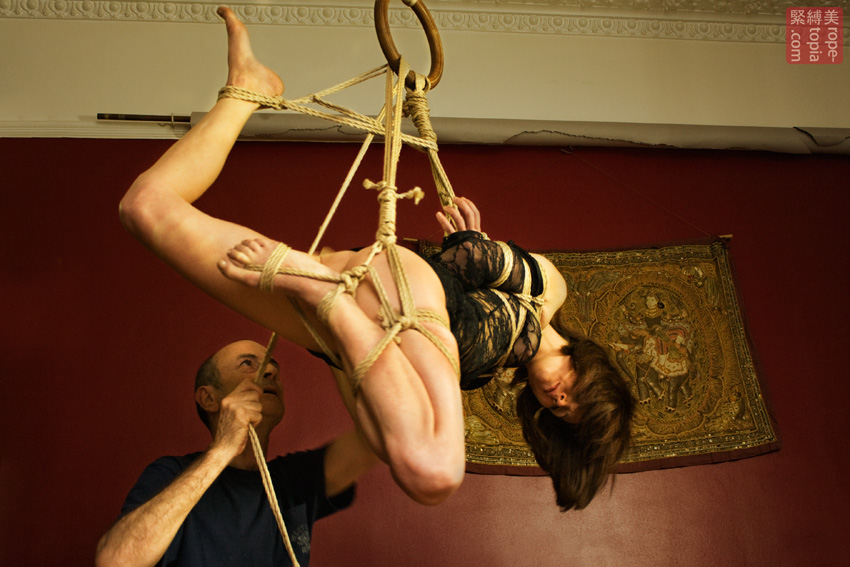I was listening to Nina coaching a private student this evening whilst she introduced the very first steps towards suspension. When she had guided him through the stages of setting up a floor based suspension with MaYa, she began to quiz him on the possibilities and the potential effects on her. How will this change the load? What will the change feel like to MaYa? This is the benefit of being taught by an experienced model who knows what it feels like on the other side of the ropes. You should always seek feedback from your partner as they can tell you how well the what you are doing things is working and when it feels better or wrose. Then, she put on her performers hat and asked him to stand back and assess the visual appeal. How could it be made more beautiful? What about filling in that space? The Japanese aesthetic is, I am told, heavily influenced by the balance of elements and space in calligraphy. It is like framing a picture as a photographer. How many of us look at rope like that when we start out? How much better can we become when we understand what we are doing rather than blindly repeat parrot fashion? If we understand the engineering, we can be creative in a safe manner. I was impressed, she was really making him think and solve problems. More of us should teach this way.
[private]If people considered the aesthetics more, we would probably see less of what I call ‘sack of potatoes’ suspensions. The ubiquitous pose is a face down suspension, with knees and chest at the ssame level, both ankles drawn up to equal height and legs bent in an L-shape, quite often with the model’s body hanging down in an unattractive slump. Taking a few moments to consider the overall effect will reveal that almost anything will look better. Even the most inflexible of us can easily move our legs into more attractive positions without any loss of comfort. Raising the ankles so high that the body tilts dramtically will generally increase pressure on the chest a lot but smaller differences are much less taxing and some can be easier that staying parallel to the ground. Assymetrical and dramtic leg positions look great but, of course, you need to consider your partner’s flexibilty. Not everybody is as unbelievably as bendy as Zlata! You can adjust the line of the body with a simple hip rope by proividing support or a proper hip harness can be used to also twist the body for an more unsual effect. Just start out by re-arranging the legs and making small adjustments to the angle of the body. Don’t forget that legs don’t have to be secured to your ring or ‘biners. You can hook back to the main suspension line or t-k if it is well built.
Try not to leave the rope ends dangling as it makes even the cleanest tying look like an explosion in a spaghetti factory. Make sure your main suspension tie offs are secure and can’t come undone accidentally if you catch the wrong rope. I have seen it happen to a pro so you can’t afford to be complacent.
[/private]

